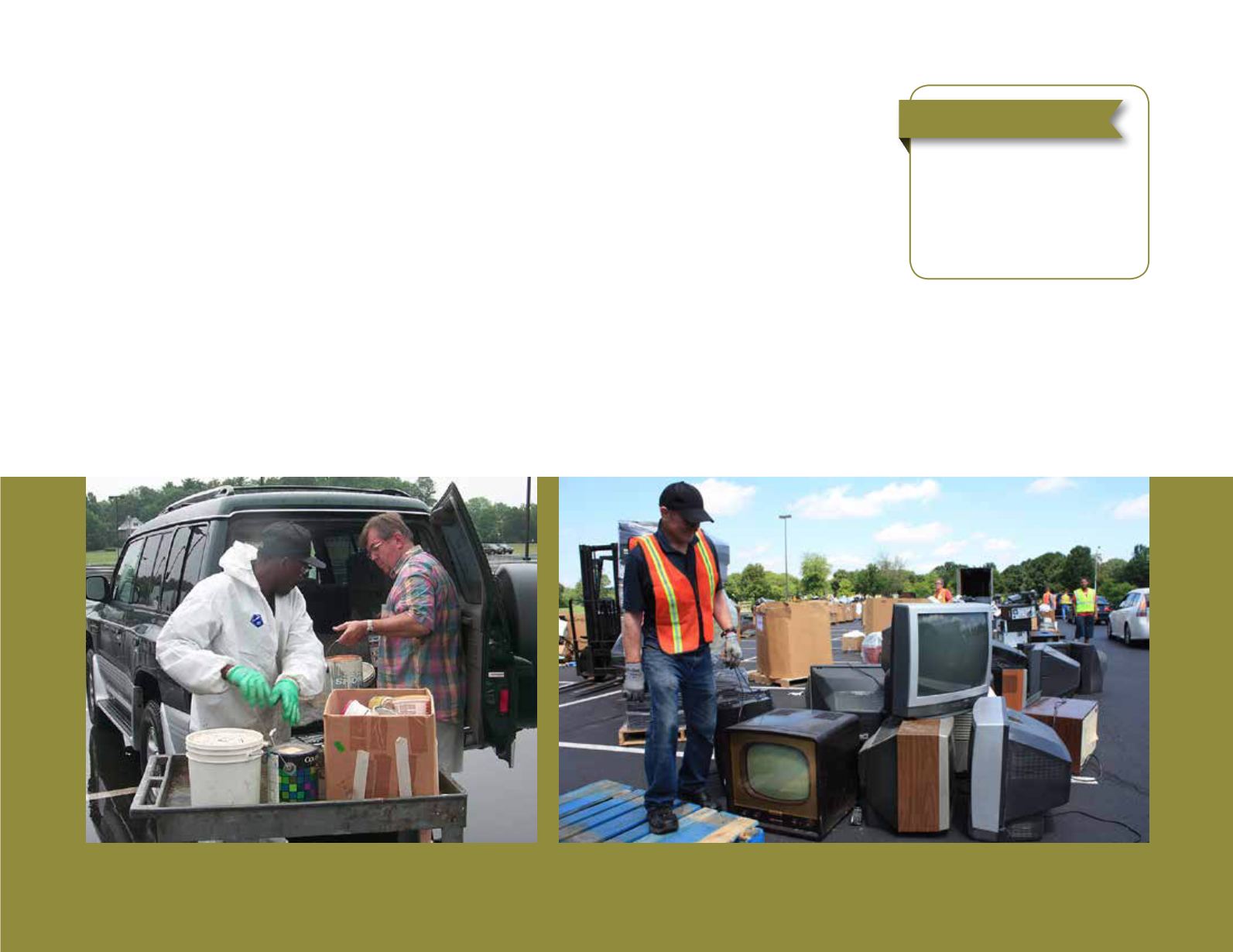
SUSTAINABLE PLACES
...encourage trash haulers, citizens, businesses, and local municipalities to increase recycling and
reuse, while reducing solid waste generation
Montgomery County has a Municipal Waste Management Plan that examines whether the county has enough capacity for the
approximately 650,000 tons of waste produced annually and outlines methods of improving waste recycling and reuse. The
current plan will be updated by the end of 2014.
Right now, the county has enough capacity for the waste it generates, and this is expected to continue in the future. About
28% of the waste stream is recycled, which is below the state goal of 35%. The county will work with its partners on
educational and outreach campaigns to move the recycling rate towards the state goal of 35%. In addition, the county will
continue to hold collections for special waste items, such as household hazard waste and outdated electronics.
… adapt to changing energy and communications needs and assist municipalities adjusting to
these changes
One of the best ways to address energy needs is to reduce energy consumption, which saves costs and reduces greenhouse
gas emissions. The county recently created a new initiative, the Energy Reduction and Sustainability (ERAS) program,
for county facilities and operations. The county will implement energy conservation measures, explore opportunities to
use renewable energy sources, and promote energy conservation and sustainability with its employees, visitors to county
facilities, and citizens-at-large. In addition, the county planning commission will continue sustainability plans for local
municipalities.
■■ Increase in recycling rates
■■ Decrease of municipal
solid waste generated
■■ More special waste
collection events held
Measuring success
Disposing of waste properly, from household hazardous waste to unwanted
prescriptions, will continue to create the need for collection events.
Electronic appliances should be recycled rather than put into the general trash stream. Unused
drugs should be disposed of at municipal drug drop-off boxes.
36


